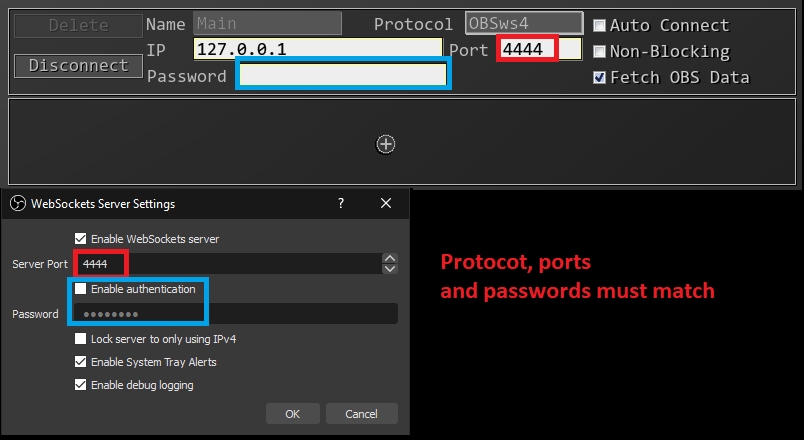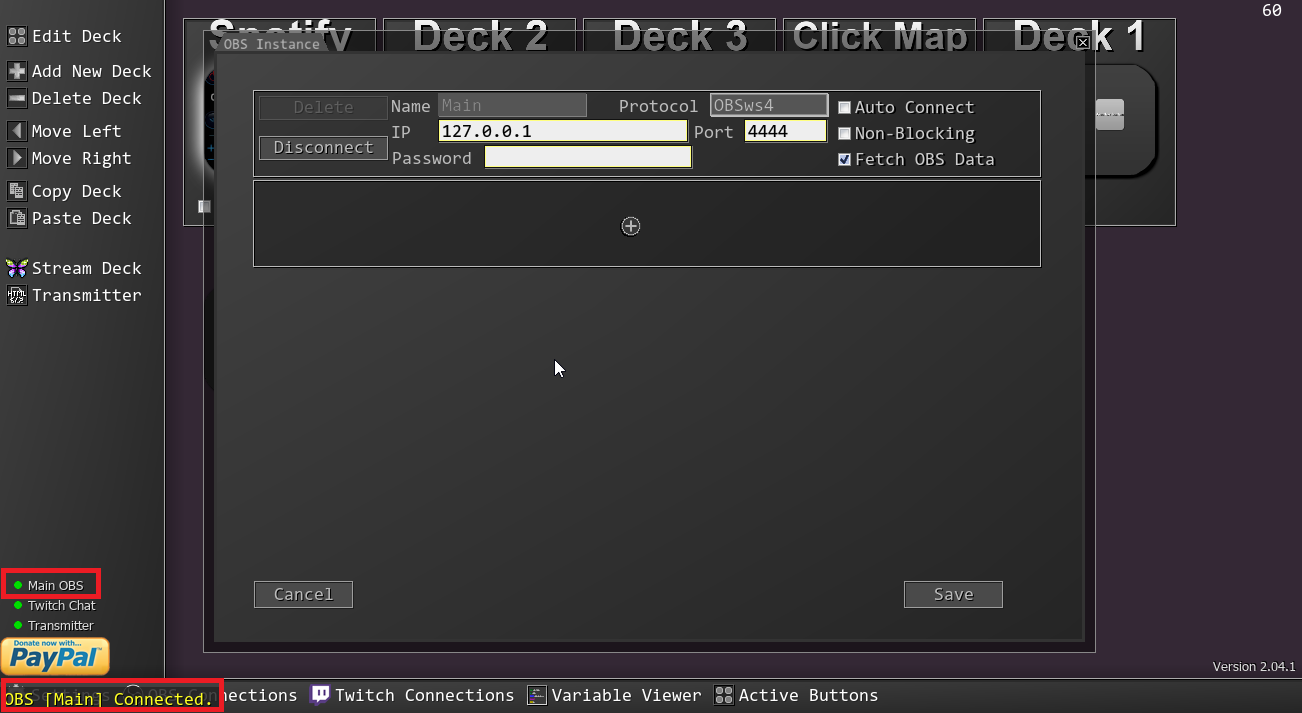OBS Studio
LioranBoard communicates with OBS via OBS Websocket (OBSWS), which allows you to remotely control and listen to OBS Studio events.
Install OBS Websocket #
We recommend installing the latest 4.9.1 version.
Connect LioranBoard to OBS Websocket #
Once you have downloaded and installed OBS Websocket, you can proceed with connecting it to LioranBoard in a few easy steps.
In your LioranBoard click on OBS Connections at the bottom menu:
Name: Name of your OBS. The first OBS will always be Main and cannot be changed.Protocol: Choose the protocol your OBS Websocket is using.IP: IP Address of the OBS Websocket. Unless you’re connecting to an OBS on another computer, it will be always127.0.0.1.Port: Port of the OBS Websocket. Must match the port in your OBS-Tools-Websocket Server Settings.Password: Password to authorize with OBS Websocket. Leave empty, unless you checked Enable Authorization in OBS-Tools-Websocket Server Settings. In that case the passwords must match.Auto Connect: Whether you want LioranBoard to automatically connect to OBS Websocket on launchNon-Blocking: Leave unchecked unless you have difficulties connecting to OBS Websocket.-
Fetch OBS Data: Whether you want to fetch OBS Data (such as current scenes and their items) from this particular OBS Websocket connection.
OBSWS settings in LioranBoard and OBS must match
Once you press connect, you should see a yellow notification message OBS [Main Connected] and the status indicator for Main OBS in the left bottom corner should change from red to green.

Connect LioranBoard to multiple OBS Websockets #
You can connect LioranBoard to multiple OBS Websockets, just add another connection in your OBS Connections settings.
You will need to manually select your OBS Name for all your OBS commands (if not using Main OBS connection), so LioranBoard knows which OBS to send them to. OBS Name accepts variables as inserts as well.

Control OBS from LioranBoard #
You can remotely control your OBS Studio with LioranBoard OBS commands.
1. Navigate to an existing deck or click on Add a new deck in your LioranBoard
2. Right click on an empty grid and select Create Button
3. Click on the and add your OBS command(s)
- Example 1: Switch to previous scene

Switch to previous scene
- Example 2: Change text in your Text (GDI+) source in OBS

Change text in your Text (GDI+) source
- Example 3: Change position of a source

Change source position
4. Click Save in your edit button screen and then Save again in your deck. This is an important step to save your button!
5. Press the button in your LioranBoard StreamDeck while connected to OBS to execute the command(s).
Permanent Variables
Once you’re connected to OBS Websocket, LioranBoard provides you with some useful permanent variables that you can use in your commands.
All OBS variables are saved in global.[obsName] object.
If you’re using only one single OBS connection, your variables will be always saved in global.Main, for example global.Main.connected.
| Variable | Explanation |
|---|---|
global.[obsName].connected |
Whether you’re connected to your selected OBS Name, 1 = connected, 0 = not connected |
global.[obsName].current_scene |
Your selected OBS current scene |
global.[obsName].previous_scene |
Your selected OBS previous scene |
Listen to OBS events in LioranBoard #
You can trigger buttons in your LioranBoard by listening to events in your OBS Studio, such as switching to a new scene or enabling a studio mode.
You can find a detailed guide to setting up your OBS triggers in our Triggers-OBS section.